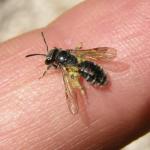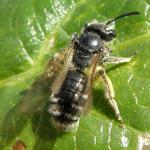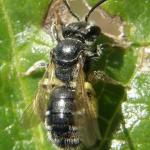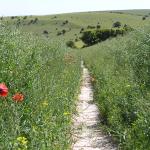Andrena niveata bubulca Warncke, 1975, Andrena niveata lecana Warncke, 1975[1973], Andrena niveata haloga Warncke, 1980
A member of the Andrena minutula species group, identified mainly in the female by the entire, dense white hair band on the fourth gastral tergite and the dense white lateral bands on the second and third tergites.
A rare species (though possibly overlooked) that is very sparsely distributed from East Kent to South Devon, north to Caernarvon. There are old records from East Anglia which are too vaguely located to map. Recent records are confined to south-east England. There are no records from Scotland, Ireland or the Channel Islands.
The species is widely distributed throughout much of the western Palaearctic, from Sweden south to southern Spain and east to the former western USSR (Osytshnjuk, 1977; Gusenleitner & Schwarz, 2002). It has also been reported from Israel.
Listed as Rare (RDB3) by Shirt (1987) and, more recently, as Vulnerable (RDB2) in Falk
Recent records are from an allotment in Surrey (Baldock, 2008) and chalk grassland sites in East Sussex, including cliff tops and arable margins (adjacent to rape crops) (S Falk and M Jenner, pers. comm.). It has also been encountered on sandy heaths and in the East Anglian fens.
Univoltine; early May to mid or late June.
Few nests have been found. On mainland Europe it has been reported to nest singly, chiefly in steppe slopes (Kocourek, 1966; Dylewska, 1987).
A rocket, garlic mustard, hoary cress, cabbage, charlock, bastard cabbage, a chervil, a water-dropwort, wild carrot, a speedwell and dandelion.
Individuals of this bee are occasionally stylopised but the identity of the parasite is not known.
2012





